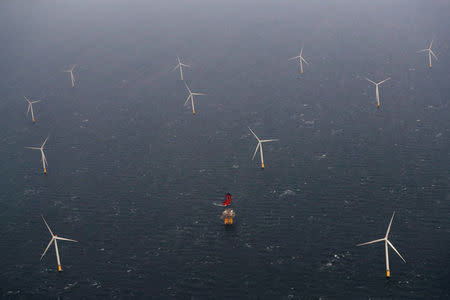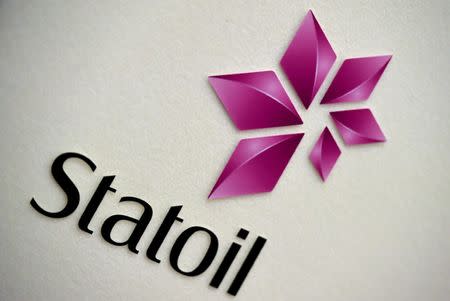Statoil eyes Britain's 2019 renewable subsidy auction for Dogger Bank
LONDON/OSLO (Reuters) - Statoil is working with its partner SSE <SSE.L> to develop the Dogger Bank offshore wind project so it can take part in Britain's renewable energy subsidy auction in 2019, the company said on Friday.
The planned 4.8 gigawatt (GW) Dogger Bank project, which has approval from the British authorities, is set to become the world's largest offshore wind park and could deliver more than five percent of Britain's electricity needs, Statoil Executive Vice President Irene Rummelhoff said in London.
Britain has replaced direct subsidies with a contracts-for-difference (CfD) system. Qualifying projects are guaranteed a minimum price at which they can sell electricity and renewable power generators bid for CfD contracts in a round of auctions.
"We are working this together with our partner SSE really hard, and aiming to bring this forward for the next CfD auction in the UK in 2019," Rummelhoff told a conference.
Statoil has a 50 percent stake in the partnership developing 3.6 GW of the approved capacity at Dogger Bank.
"The strategic importance of that project to the UK and Statoil can not be overestimated," Rummelhoff said.
The Norwegian oil and gas firm says it plans to spend up to 15-20 percent of capital spending on "new energy solutions" by 2030, as part of its effort to become a "broad energy" company.
Last year, Statoil built the world's first floating offshore wind park off Scotland, using in-house technology. Its plans also include developing a 1.5 GW offshore wind park in the United States outside New York.
"We see growing potential for floating (wind projects)," Rummelhoff said. "We expect about 13 GW floating offshore wind to be installed by 2030. On a global basis, we hope to take a fair share of that."
Floating turbines could help to harness wind energy beyond the shallow waters where turbines stand on fixed foundations.
Statoil also entered the first project to build a 162 megawatt solar power plant in Argentina last year.
"We are carefully testing solar," Rummelhoff said. "We see a lot of opportunities to use our engineers, but we have not decided to go all in solar yet."
(Reporting by Ron Bousso in London and Nerijus Adomaitis in Oslo; Editing by Terje Solsvik and Edmund Blair)

 Yahoo Finance
Yahoo Finance 

